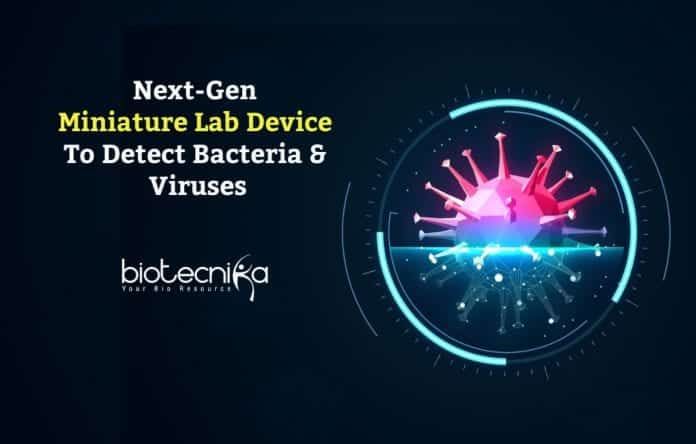Micro Device By RIT Researchers
Micro-device to detect bacteria, viruses.
A next-generation miniature lab device that can isolate minute bacterial particles that cause disease using magnetic nano-beads was developed by engineering researchers at the Rochester Institute of Technology’s Kate Gleason College of Engineering. Using this new technology improves how clinicians isolate difficult-to-detect micro-particles such as those making up Ebola and coronaviruses and drug-resistant strains of bacterial infections.
At the Rochester Institute of Technology’s Kate Gleason College of Engineering, faculty-researchers, Blanca Lapizco-Encinas, and Ke Du worked on the design of the new system, a microfluidic device, essentially a lab-on-a-chip by collaborating with an international team.
Around the world, hundreds of thousands of deaths are caused by drug-resistant bacterial infections. Du explained, by 2050, nearly 10 million deaths annually would be caused by antibiotics resistance, based on a report from the United Nations.
Du said, “Detecting, understanding, and treating these diseases better is crucial for us. We are trying to contribute to the sample purification and preparation, as this is critical and essential to provide rapid and accurate detection. For isolating and detection of viruses such as Ebola and coronavirus, we are proposing to use this novel device.
The lab team is
particularly interested in testing bodily fluids to detect bacterial infection. How to isolate higher concentrations of pathogens better is one of the major problems for detection.The device is a sophisticated lab environment that should be much faster at collecting and analyzing specimens than the commercially available membrane filters and can be used in field hospitals or clinics. Bacteria molecules are attracted to packed, magnetic microparticles, and the device’s wide, shallow channels trap these small bacteria molecules.
The flow rate of fluids where bacteria are suspended is increased by this combination of the deeper channels on the nano-device, and the process of capturing/isolating bacterial samples is improved by the inclusion of magnetic beads along the device channels.
With a microparticle-based matrix filter, researchers were able to successfully isolate bacteria from various fluids. A larger concentration of bacteria for analysis is provided by the filter trapping particles in small voids in the device. Multiple samples can be tested at the same time as the device being a smaller device is an added advantage.
Du said, “An E.coli contaminated lake can be tested by bringing this portable device to the lake. For the bacteria to get trapped and concentrated, a few milliliters of the water sample can be taken and it can be run through our device. We can either release these bacteria into certain chemicals to analyze them, or we can quickly detect these bacteria in the device.”
The increased capability toward better pathogen detection, specifically for bacteria and microalgae isolation and concentration were provided by the researchers collaborating with a biomedical engineer with expertise in electrophoresis (a process that uses electrical current to separate biomolecules), Lapizco-Encinas.
An associate professor in RIT’s biomedical engineering department, Lapizco-Encinas said, “We are not just isolating and detecting bacteria in water and human plasma, our goal is also to work with whole blood samples to detect and understand blood infection such as sepsis. A solid plan for that is already ready. For sequential isolation, using a pair of nano-sieve devices is the idea.”
To address the global challenges of disease pandemics, Du and Lapizco-Encinas were part of a team that consisted of biomedical and mechanical engineers from Rutgers, Tsinghua-Berkeley Shenzhen Institute in China, SUNY Binghamton, and the University of Alabama.
The journal ACS Applied Materials and Interfaces published this new data in the article “Rapid Escherichia coli trapping and retrieval for bodily fluids via a three-dimensional bead-stacked nano-device.”
The research team consists of Qian He, Abbi Miller, and Xinye Chen, all RIT engineering doctoral and graduate students; Jie Zhang, Carollo Engineers Inc. in Seattle; Peiwu Qin from the Center of Precision Medicine and Healthcare, Tsinghua-Berkeley Shenzhen Institute, China; Xin Yong, assistant professor of mechanical engineering from SUNY Binghamton; Ruo-Qian Wang, assistant professor of civil and environmental engineering from Rutgers University; University of Alabama assistant professor of electrical and computer engineering Yu Gan and undergraduate student Shengting Cao.
Source
Micro Device By RIT Researchers






























